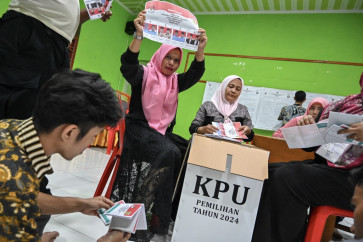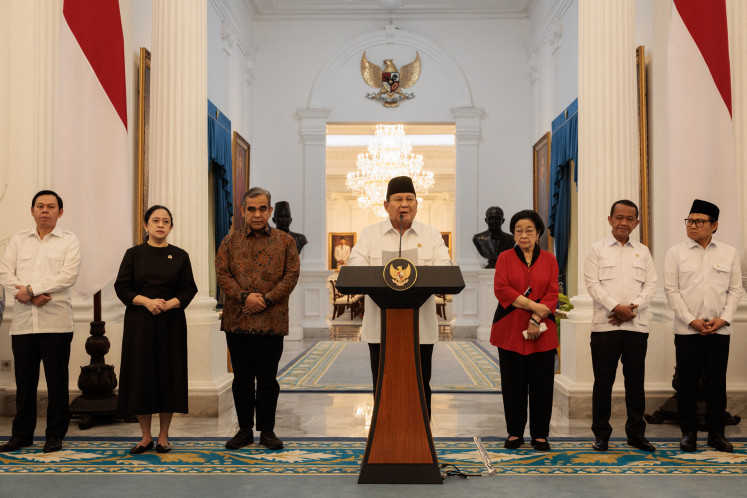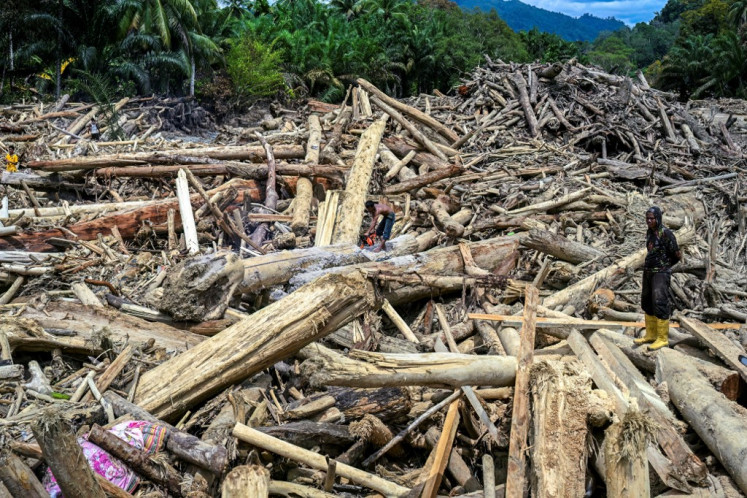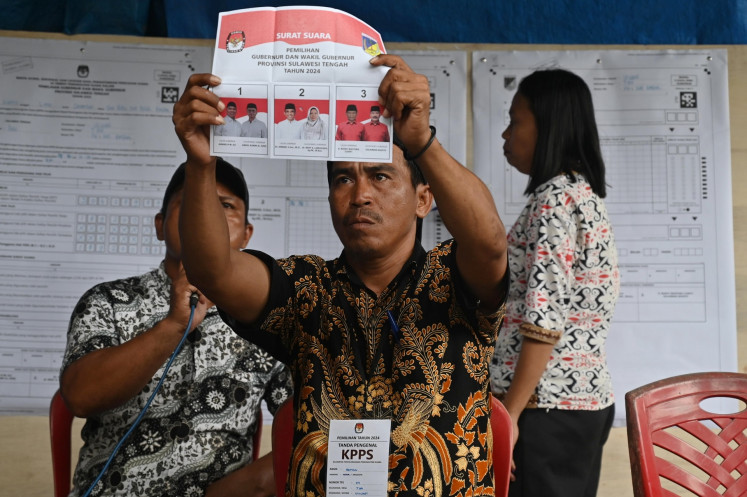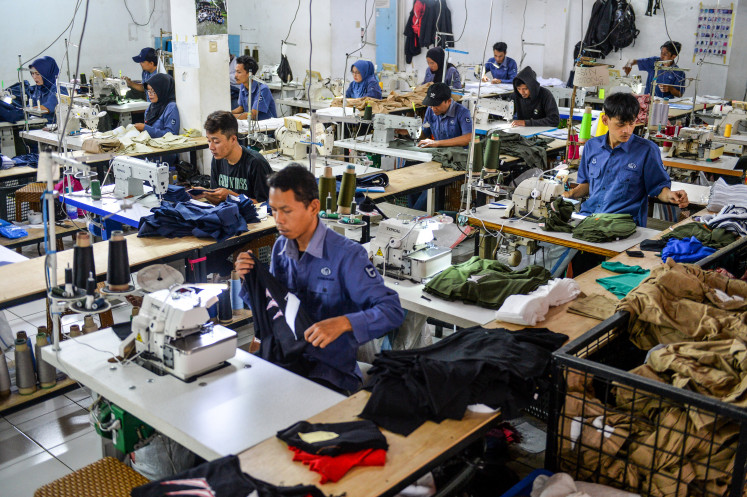Popular Reads
Top Results
Can't find what you're looking for?
View all search resultsPopular Reads
Top Results
Can't find what you're looking for?
View all search resultsTechnology predictions for 2025 and beyond
By embracing a community-centric, data-forward model, we’re building a future where technology augments human resilience, enabling communities to navigate an increasingly unpredictable world with confidence and autonomy.
Change text size
Gift Premium Articles
to Anyone
W
e have entered an era of unprecedented societal challenges and rapid technological advancements. Harnessing technology for good has become both an ethical imperative and a profitable endeavor.
The rise of intention-driven technologies is reshaping our relationship with the digital world, promoting focus and well-being over mere attention capture. In the coming years, using technology for positive impact will not just be possible—it will redefine the way we think about success.
As the world tackles challenges around sustainability, social equity, food and economic security, and responsible artificial intelligence (AI), a quiet revolution is unfolding in the job market—a move toward work that benefits humanity. Across industries and generations, there is a shift in worker values and preferences, with a growing number of people seeking roles that allow them to make a meaningful impact on society and the environment.
Research has shown that millennials and Gen Z, now the largest segments of the global workforce, place a premium on finding meaning and purpose in their work. A recent study by Harvard Business School claims that college graduates are willing to sacrifice pay for jobs with pro-social impact. To remain competitive, businesses must adapt their strategies to attract and retain these purpose-driven employees.
This means creating roles with positive social impact, integrating sustainability principles into existing positions, and authentically embedding environmental, social, and governance values into core business strategies. Companies that offer meaningful work and empower employees to drive positive change will attract the best talent. Moreover, these organizations will position themselves for long-term success in a world where social and environmental considerations are integral to business performance.
In the last decade, renewables such as wind and solar have become increasingly scalable and reliable, marking a significant milestone in our transition towards cleaner energy production. They’ve been instrumental in reducing our carbon footprint and decentralizing production, and by 2028, renewables are projected to generate 42 percent of the global energy supply. Yet, despite their rapid advancement and widespread adoption, renewables alone cannot meet our accelerating energy demands fast enough. To bridge this gap, we need a constant, modular, round-the-clock complement.
Addressing energy challenges extends beyond generation; it also involves rethinking consumption. As the demand for computational power grows—driven by the widespread adoption of generative AI across industries—we must reconsider how data centers consume energy. Beyond that, the next frontier will involve designing data centers as flexible load centers, capable of adjusting their consumption based on real-time grid needs.
This transformative shift will also require a skilled workforce, from nuclear engineers and machinists to grid management experts and material scientists. Investing in education, training, and reskilling programs will be crucial. And it will reshape economies by creating high-paying, highly skilled jobs and driving innovation across sectors. Clean energy, bolstered by technological innovation, and a skilled workforce, is set to unlock a new era of innovation, redefining what’s possible and propelling us to a sustainable, clean energy future.
We have shifted from an era of prolonged news cycles that lasted weeks or months, to an immediate, constant stream of updates breaking instantly. Social media platforms have become a primary source for disseminating and consuming news, and it’s never been harder to distinguish between what’s true and false. A world where being first is more important than being correct has eroded public trust in traditional media and news outlets.
The implications are profound: a significant portion of the populace struggles to identify genuine information (52 percent), leading to widespread skepticism and sharing of misinformation. Yet, if technology has helped fuel the crisis, it is also the key to solving it.
In the past decade, Open-Source Intelligence (OSINT) has emerged as a vital tool in unraveling complex investigations and uncovering truths hidden beneath layers of deception. Organizations, such as Bellingcat and ProPublica, have used public data (geolocation, chronolocation, IP addresses, etc.) for everything from exposing human rights violations to investigating international conflicts. Major newsrooms worldwide have adopted OSINT methodologies to fact-check and validate investigations (and in some cases have open sourced their homegrown tools).
The development and democratization of these tools will level the playing field, allowing accurate information to flow as rapidly as disinformation. This transition will not only help to restore public trust in traditional news sources, but also enhance the overall quality of discourse across digital platforms. The path forward is clear: use technology not just to connect the world, but to protect the integrity of the information that binds us.
From Typhoon Alley to the Australian bush, the severity and frequency of natural disasters worldwide are on the rise. Today’s disaster response systems often struggle with fragmented or inaccessible data, particularly in vulnerable and isolated communities. At the core of effective disaster preparedness is data—the ability to collect and use it within a structured framework. While top-down relief efforts have advantages, such as mobilizing large-scale resources, they often lack the nimbleness and dynamism required for rapid response.
With the ubiquity of cell phones, communities are empowered to collect diverse, on-the-ground information. By putting data and decision-making power in the hands of communities, we are not just improving disaster response—we’re creating a network of disaster management hubs that enhance preparedness. In the face of increasing disasters, this shift from reactive to proactive, data-driven disaster preparedness isn’t just nice to have; it’s an absolute necessity. Ultimately, by embracing a community-centric, data-forward model, we’re building a future where technology augments human resilience, enabling communities to navigate an increasingly unpredictable world with confidence and autonomy.
Lastly, in a world where our devices are extensions of ourselves, capturing attention has become a billion-dollar industry. Every swipe, headline, and notification are engineered to hook us.
This relentless pursuit of our attention has led to unintended consequences, such as rising levels of anxiety, depression, and a pervasive sense of distraction. We need to shift to a more intention-driven approach.
Don’t get me wrong—this shift doesn’t mean abandoning digital connectivity, but rather being mindful of how devices can augment our intentions instead of simply grabbing our attention. It’s about striking a delicate balance.
These practices align with the Dutch concept of “niksen”—purposeful idleness, or the art of doing nothing. This approach recognizes that in our increasingly complex world, embracing simplicity can realign technology with our core values and mental health.
With a return to intentionality, we can elevate our relationship with technology, ensuring it empowers us rather than distracts us.
***
The writer is vice president and chief technology officer of Amazon.com.




